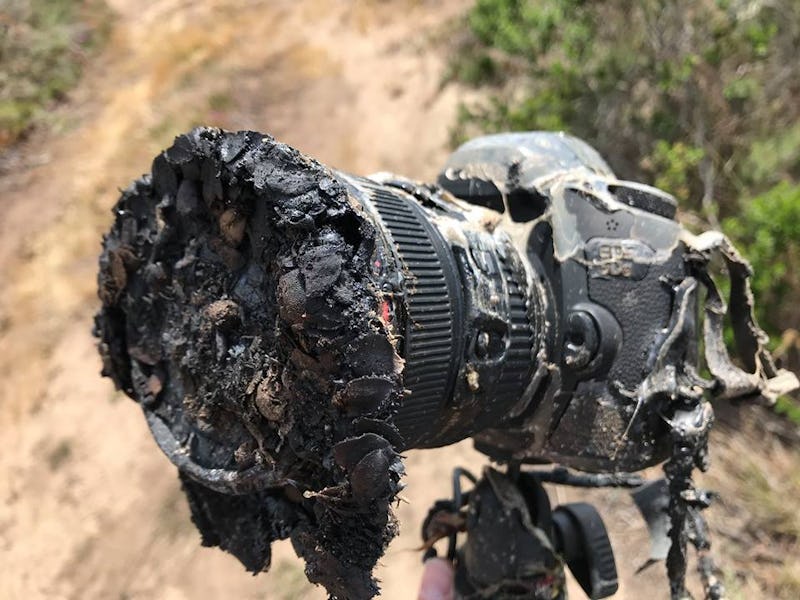SpaceX Falcon 9 Launch Was Successful Apart From This Roasted NASA Camera
At least the photos were lit.

Photographing rocket launches may yield breathtaking views and dope space pics, but it can also be hazardous to your equipment. Just ask NASA photographer Bill Ingalls, who captured the SpaceX Falcon 9 launch only for his camera to get roasted.
On Tuesday, SpaceX launched two spacecrafts as part of the Gravity Recovery and Climate Experiment Follow-On (GRACE-FO) mission from the Vandenberg Air Force Base northwest of Santa Barbara. Ingalls was there to capture the Falcon 9 launch, accompanied by several Canon DSLR cameras remotely triggered from different areas around the launch pad. However, not all of his equipment survived the otherwise successful launch.
The launch triggered a brushfire in the surrounding areas, which, as Ingalls pointed out on his Facebook page, is not uncommon for launches in the area. Local fire departments were able to extinguish the blaze but not before Ingalls’ camera became a casualty. “My cam was baked,” he said, sharing a photo of the melted Canon.
Bill Ingalls' camera after the Falcon 9 launch
Despite a destroyed camera, the memory card survived. Ingalls was able to salvage the card and share some of the most up-close and personal images of the launch before his camera became overpowered by smoke.
Image from the lost camera (RIP)
And yes, his camera managed to get a very up-close and personal image of the flames that would bring its demise. Here’s a close-up of the culprit:
The flames that took down the camera
The GRACE-FO satellites are part of a $521 million project between NASA and the German Research Centre for Geosciences. The satellites will be used to measure the changes in the pull of gravity on Earth by checking whether the distance between the two satellites has changed while flying over areas of higher and lower mass. Data from the two satellites will also be used to monitor changes in water storage, ice sheets, and glaciers on Earth.
The successful launch (camera notwithstanding) is just the start of SpaceX launches slated for this summer. A second Falcon Heavy launch is set to take place in June.
“I had many other cameras much closer to the pad than this and all are safe,” Ingalls said. While the lost equipment is expensive, these close-range photos are a great consolation prize.